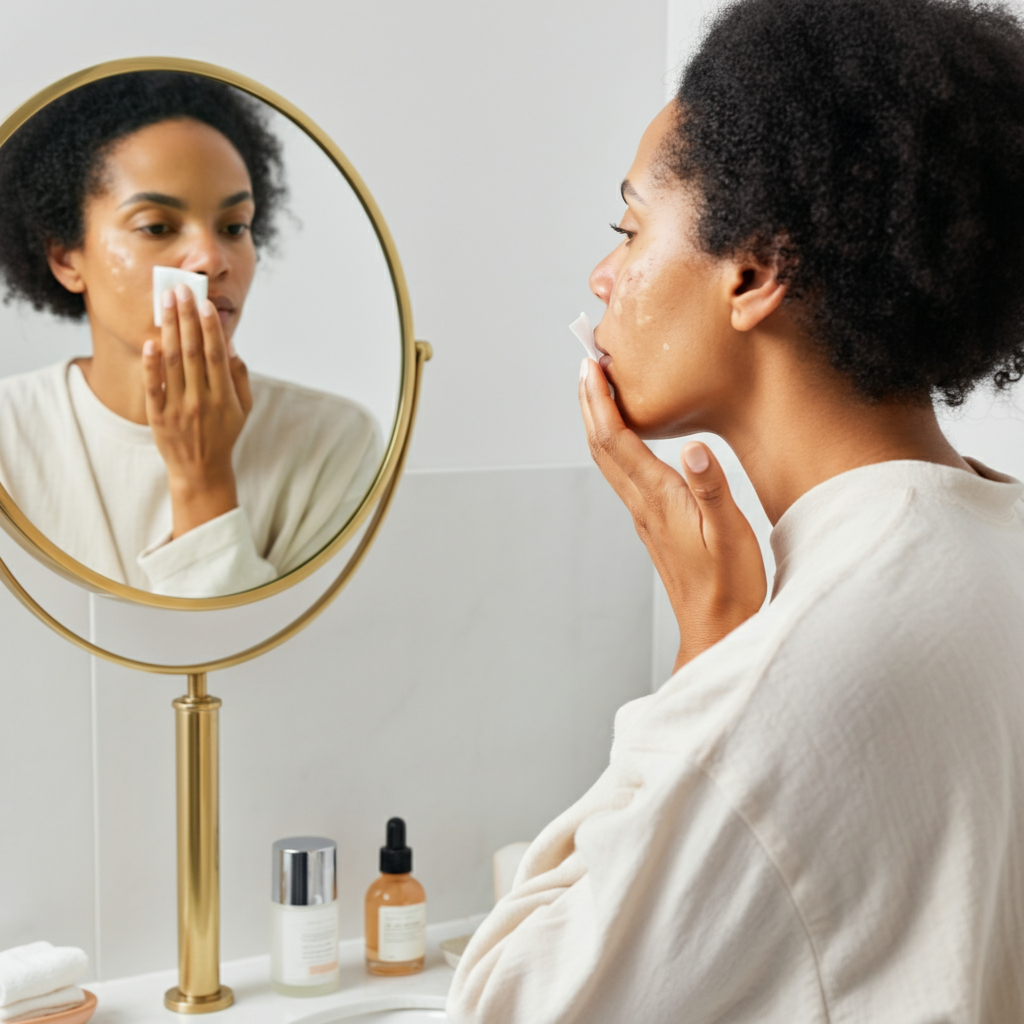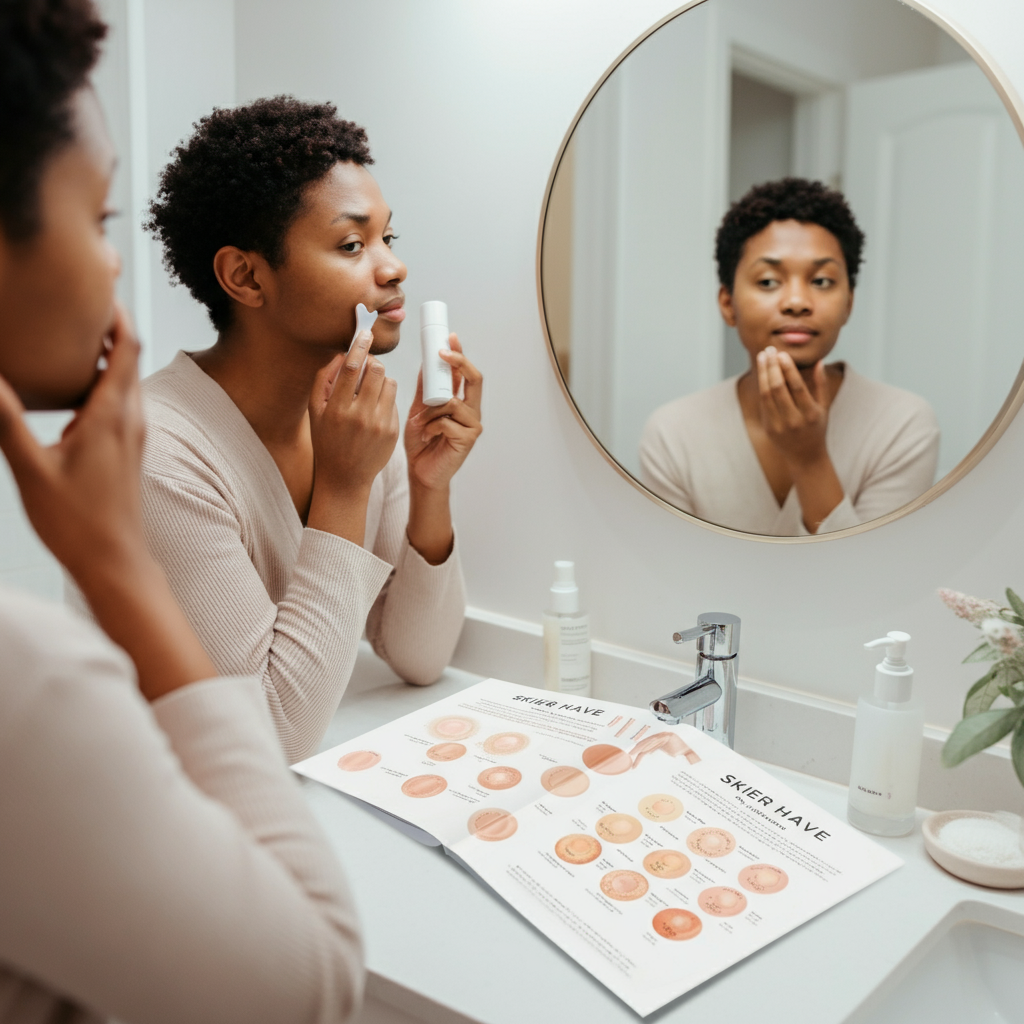Understanding your skin type is the foundation of any effective skincare routine. Without knowing whether your skin is oily, dry, combination, normal, or sensitive, it’s easy to choose the wrong products that can worsen existing issues. From unexpected breakouts to persistent dryness, using the wrong regimen can leave your skin looking and feeling far from its best.
This guide will walk you through everything you need to know about skin types—from understanding the basics to simple tests for identifying your own. By the end, you’ll not only know your skin type but also how to care for it properly. Because after all, healthy, glowing skin starts with a plan tailored to your skin’s unique needs.
Understanding the Basics of Skin Types
What Does Skin Type Mean?
Your skin type refers to the natural state of your skin and how it behaves under various conditions. Whether your skin tends to produce excess oil, feel dry and tight, or balance somewhere in between, understanding your type provides insight into choosing the best products and routines.
What Influences Your Skin Type?
- Genetics play a significant role; you may inherit certain tendencies from your parents.
- Environment affects your skin daily. Factors like humidity, air quality, and exposure to UV rays can influence how your skin behaves.
- Lifestyle Choices, including diet, hydration, sleep, and stress, all impact your skin.
Common Myths About Skin Types
- Myth: “If my skin is oily, I don’t need to moisturize.”
- Truth: All skin types benefit from hydration. Use lightweight, non-comedogenic moisturizers if you have oily skin.
- Myth: “Dry skin just means I’m dehydrated.”
- Truth: Dehydration is a lack of water, while dry skin lacks natural oils.
Detailed Descriptions of Each Skin Type
Oily Skin
Characteristics
- Shine, particularly in the T-zone (forehead, nose, chin).
- Enlarged pores.
- Prone to blackheads, whiteheads, and acne.
Causes
- Overactive sebaceous glands.
- Hormonal fluctuations.
- Environmental factors like humidity.
Best Practices
- Cleanse twice daily with a gentle, salicylic acid cleanser.
- Choose oil-free, non-comedogenic skincare products.
- Incorporate clay masks weekly to reduce sebum.
Must-Have Ingredients
- Salicylic acid
- Niacinamide
- Retinol
Dry Skin
Characteristics
- Flakiness, rough texture, and a tight feeling.
- Redness and visible fine lines.
Causes
- Lack of natural oil production.
- Harsh weather or excessive indoor heating.
Best Practices
- Use a hydrating cleanser that doesn’t strip natural oils.
- Layer a rich, emollient moisturizer after applying hyaluronic acid.
- Apply sunscreen daily to prevent further moisture loss.
Must-Have Ingredients
- Hyaluronic acid
- Shea butter
- Ceramides
Combination Skin
Characteristics
- Oily T-zone with dry or normal cheeks.
- Varying needs for different areas of the face.
How to Identify
- Your T-zone often becomes shiny, while other areas may feel tight.
Best Practices
- Use a gentle, balancing cleanser.
- Apply lightweight moisturizer to oily areas and richer creams to drier areas.
- Use targeted treatments like spot care masks for specific zones.
Must-Have Ingredients
- Witch hazel for oil control.
- Hyaluronic acid for hydration.
Normal Skin
Characteristics
- Balanced hydration and minimal sensitivity.
- Rarely breaks out or experiences redness.
Common Concerns
- Maintaining balance.
- Occasional changes due to seasons.
Best Practices
- Stick to a simple routine with a gentle cleanser, moisturizer, and sunscreen.
- Exfoliate weekly for a healthy glow.
Sensitive Skin
Characteristics
- Prone to redness, itching, and irritation.
- Becomes inflamed with harsh products.
Triggers
- Fragrance, alcohol, or harsh chemicals.
- Extreme weather conditions.
Best Practices
- Use fragrance-free, hypoallergenic products.
- Apply soothing serums with calming ingredients like aloe vera or chamomile.
- Patch test new products before use.
Must-Have Ingredients
- Aloe vera
- Colloidal oatmeal
- Centella asiatica
Simple Tests to Determine Your Skin Type

The Bare-Faced Method
- Wash your face with a gentle cleanser and pat dry.
- Leave your skin bare (no products) for one hour.
- Observe how your skin feels and looks.
- Shiny areas indicate oiliness.
- Tight or flaky areas suggest dryness.
The Blotting Sheet Method
- After a few hours of wearing no makeup, press blotting sheets onto your face.
- Examine areas like your forehead, nose, and cheeks.
- Excess oil on the sheet means oily skin.
- If only specific areas are oily, you might have combination skin.
The Observation Method
- Throughout the day, take note of how your skin reacts.
- Does makeup slide off easily? It’s likely oily.
- Does your skin feel tight by evening? It could be dry.
Factors That Can Affect Your Skin Type
Seasonal Changes
- Colder months may lead to dryness, while summer increases oil production.
Hormonal Changes
- Puberty, pregnancy, and menstruation can all impact how your skin behaves.
Medications
- Certain medications, like acne treatments, can lead to dryness or increased sensitivity.
Tailoring Your Skincare to Your Skin Type
No matter your skin type, some universal truths apply:
- Always wear sunscreen.
- Stay hydrated.
- Avoid over-exfoliation.
Product Recommendations
- For oily skin, try oil-free moisturizers like Neutrogena Hydro Boost Gel.
- Dry skin? Opt for CeraVe Moisturizing Cream.
- Skin feeling sensitive? La Roche-Posay Toleriane range is excellent.
Why Consulting a Dermatologist Matters
If you’re struggling to determine your skin type or facing persistent issues, seeking professional advice is invaluable. Dermatologists can provide tailored recommendations and treatments to help you achieve healthier skin.
What to expect during a consultation:
- A detailed analysis of your skin.
- Professional advice to choose suitable products or medications.
Real Stories From People Like You
Sarah from New York previously dealt with excessive oil and breakouts. After using the blotting sheet method and switching to a niacinamide-based serum, her skin became more balanced within six weeks.
Similarly, Jason realized his peeling, itchy skin was a sign of sensitivity—not dryness. Switching to fragrance-free products made all the difference.
Your skin story could be next!
Take Charge of Your Skincare Today
Understanding your skin type is the first step to achieving the glowing, healthy skin you deserve. Take one of the simple tests outlined here and build a routine tailored to your skin’s needs.
Have questions or need personalized advice? Feel free to comment below!



